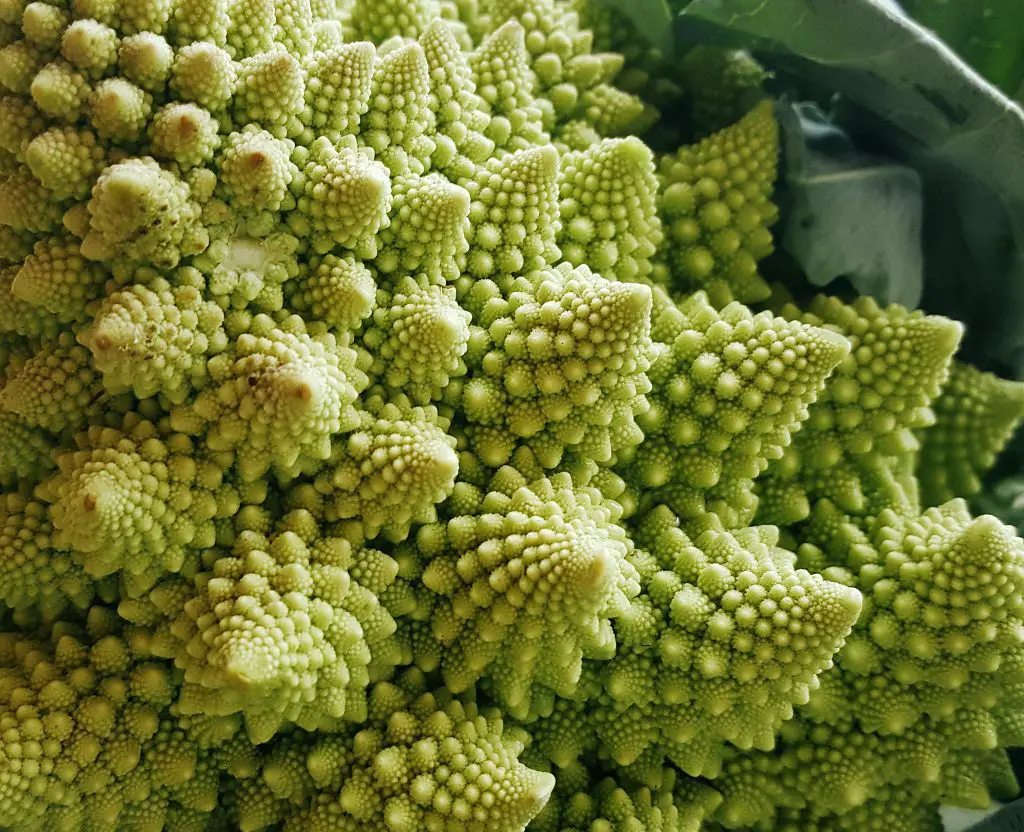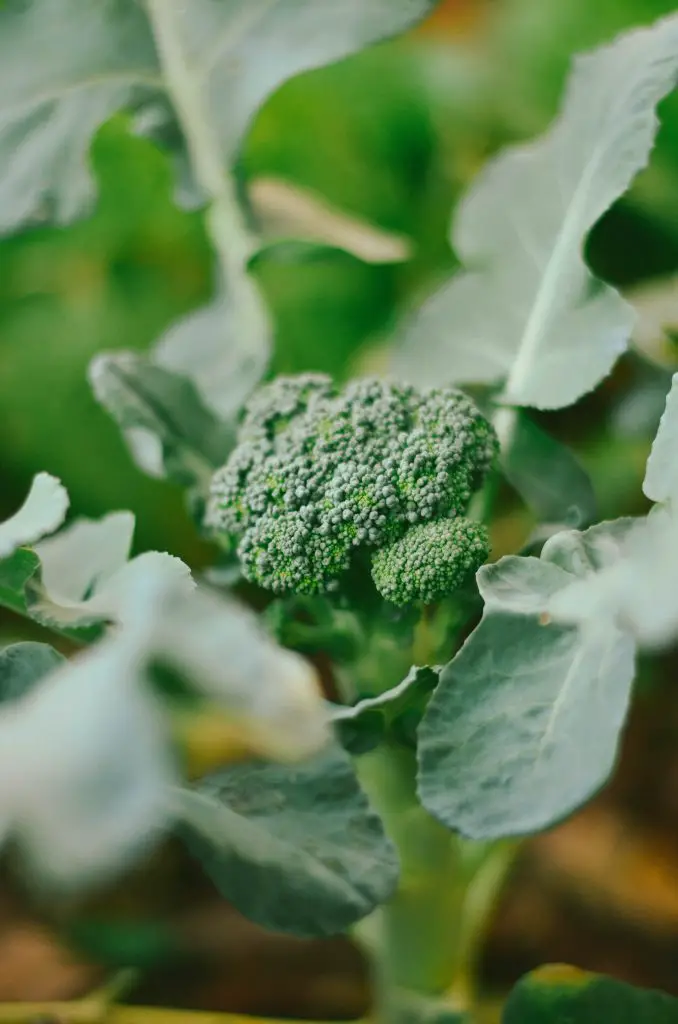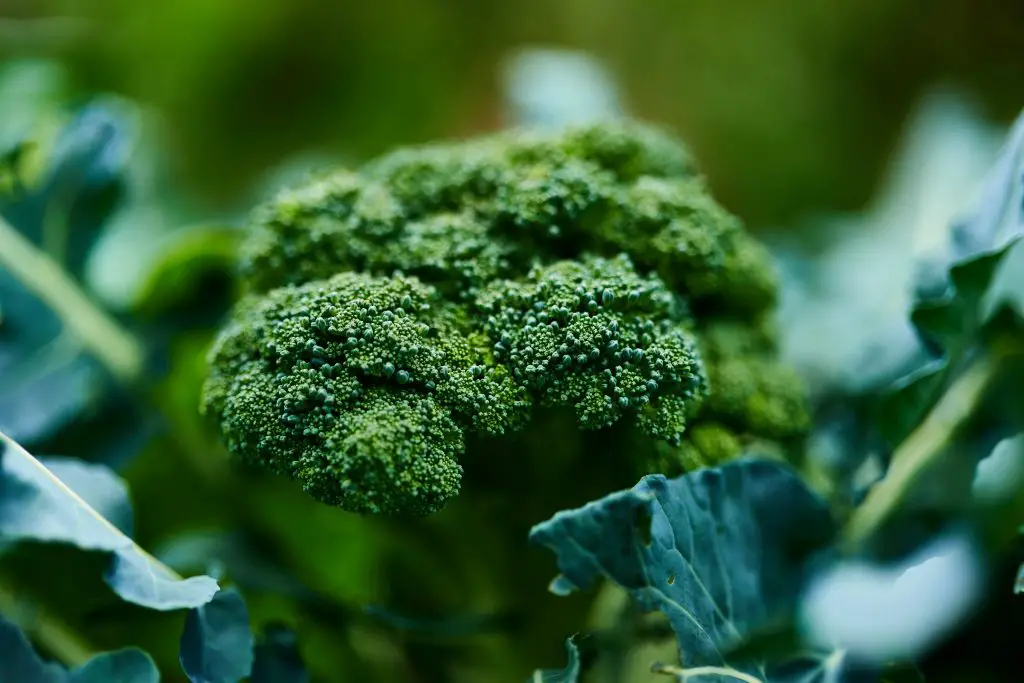Does Broccoli Grow Underground? Broccoli is one of the most popular winter vegetables eaten around the world. It is widely used in both European and Asian cuisines and can be grown in a range of climates. However, if you have never seen broccoli grown one of the questions you may wonder is does broccoli grow underground?
Broccoli does not grow underground it is produced from a small plant that is approximately 1 to 2 ft tall. The section of the plant that we actually eat is the broccoli flower prior to a blooming and also the stalk of the plant. There are many different varieties available, however, the one that most people are familiar with is the calabrese type which is the broccoli that looks like a small tree and is commonly sold in major supermarkets.
The other main types of broccoli include romanesco varieties which have a striking geometric pattern that is shown in the picture below. There is also purple sprouting broccoli and Chinese broccoli available as well.

Romanesco broccoli varieties are considered to have a better flavor according to many top chefs however this variety is not produced commercially because it requires substantially more space than the calabrese types which makes it less economically viable.
The disadvantage associated with romanesco broccoli for home gardeners is that it only produces a single head of broccoli whereas calabrese types will produce a main head and then subsequent side shoot which extends the harvest period for several weeks. However, these side heads are generally significantly smaller than the main broccoli head.
About Broccoli
Broccoli is a member of the brassica family that includes plants such as cabbage, cauliflower, kale, and kohlrabi. Broccoli originated in Europe approximately 2000 years ago and first appeared in Italy as a result of the interbreeding f different types of brassica crops.
And while most people consider broccoli to be a separate species it is actually just a variety from the species, Brassica oleracea. Brassica oleracea, also includes a range of common supermarket vegetables that include cabbage, cauliflower, collard greens, and kohlrabi.

For the uninitiated two plants that are considered to be from the same species are capable of being interbred to produce viable offspring. All of the vegetables listed above can actually be cross pollinated to produce new varieties.
These new varieties that were developed most likely by artificial selection by local farmers which spread throughout Europe from about the 6th century onwards though the rate of spread was relatively slow with broccoli not being grown in the northern parts of Europe until the 17th and 18th centuries.
Towards the end of the 18th-century Italian immigrants also introduced broccoli to other parts of the world such as the US and Australia. Since the end of the second world war, substantial development has been done to create hybrids that increase the yield and speed of growth of the plants, and today most commercial crops are produced using hybrids seeds.
Is Broccoli Hard To Grow?
Broccoli is generally a relatively easy plant to grow though it does perform best in cooler climates. If you attempt to grow the plant through peak summer you will generally find that the flower heads develop too quickly and will produce lower quality broccoli. However, unlike cauliflower which cannot be grown in these conditions, broccoli can be grown in summer but the quality of what is produced is poorer.

How To Grow Broccoli
As mentioned in the previous section, it is generally a good idea to avoid growing broccoli in the hottest part of the year as such we generally recommend that seeds be sown from Midsummer through to mid spring. Whether you can grow the plants in winter is highly dependent upon the nature of the climate in which you live. Those regions with relatively mild winters can grow broccoli at this time of year.
To start broccoli off it is recommended that the seed be planted into a seed tray rather than directly into the garden. The reason for this is that in summer there is unlikely to be much space in your garden as you are likely to be producing other crops so sowing into the seed tray will allow you to get the seeds going without having to wait for space to appear. Whereas in winter the temperatures are generally too cold to plant outside.
If you are planting in winter it is ideal to use a heated propagation tray rather than just simply bring a seed tray inside. The reason for this is that heated propagation trays make it much easier to control the temperature accurately ensuring that the seedlings have the best possible conditions in which to grow.
If you are considering purchasing a heated propagation tray the one we would recommend is the iPower germination kit because it contains a removable seed tray and a humidity dome. The removable seed tray is advantageous because that is the component within the unit that is most likely to deteriorate first. Being able to replace this component will extend the life of the unit substantially.
The humidity dome is beneficial because it helps to maintain warmth and humidity around seedlings which will optimize the growing conditions. To seed the latest price on amazon click on the link below.
To plant the seeds start by filling the seed tray with a good quality seed raising mix and ensure that you press down on the soil to form firm plugs. This is important as it will make the transplanting process much easier later on.
In each cell plant two to three seeds to ensure that at least one seed germinates in every cell. If more than one seedling germinates then thin to the strongest one. Once planted the seedlings will typically take 7 to 14 days to appear and will need to spend approximately 6 weeks in the seed tray before they can be planted out into the garden.
During this period it is important to ensure that the soil remains moist as the seedlings will not do well if they’re allowed to dry out.
Planting Broccoli Seedlings Into The Garden
Once the seedlings have reached the point at which they are large enough to put them into the garden they should be planted in a sunny location that has rich moist and free-draining soil with plenty of nutrients. If you are concerned about the number of nutrients in the soil it is advisable to add a bag of compost before planting.
When putting the seedlings into the garden they should be spaced approximately 12 to 15 inches apart and the area should have a layer of mulch applied to the garden bed, ideally 2 to 4 inches thick.
Additionally, it is advisable to also sprinkle snail pellets around the seedlings as they are susceptible to attack early on. Once the seedlings are planted it is important to ensure that they are watered regularly and the beds are kept weed-free.

Harvesting Broccoli
As the plants begin to increase in size they will begin to produce a flowerhead that initially will be quite small. As the flowerhead reaches a diameter of around 3 to 4 inches it is important to keep a close eye on its development.
Broccoli should ideally be harvested before any of the beads begin to produce flowers. To ensure that this does not happen it is important to inspect broccoli regularly and look for any signs of yellow flowers. If there are any present then you need to harvest immediately otherwise the broccoli can be harvested at any stage when you need it.
Storing Broccoli
If you have more broccoli than you need it is best to harvest it at its peak and then freeze it if you have sufficient space. To freeze broccoli it is easier to cut up the heads into smaller bits and then blanch the broccoli for a minute or two. The broccoli can then be drained and stored in resealable plastic bags in a freezer until you need it.
I hope you found this article useful and have great success growing your own broccoli at home. If you have any additional questions or comments please leave them in the section below.
Relevant Articles
What Are The Different Types Of Broccoli?
How Many Broccoli Heads Grow On One Plant?
Can Cauliflower Grow In Summer?


